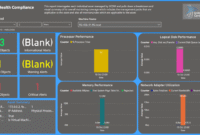When Data Meets Empathy A New Era of BI Marketing is reshaping how businesses approach their marketing strategies. In a world flooded with information, the fusion of analytical data and human empathy creates a powerful narrative that resonates with consumers. This new perspective not only enhances customer relationships but also drives innovation in the field of marketing, encouraging brands to connect on a more personal level.
By prioritizing empathy alongside data, businesses can better understand the needs and motivations of their audience. This approach leads to more effective marketing campaigns that are tailored to evoke genuine responses and foster loyalty. As we delve into this dynamic intersection, we explore the implications and opportunities that arise when analytical insights meet human emotion.
In today’s fast-paced world, the significance of effective communication cannot be overstated. Whether it’s in a business environment or personal interactions, the ability to convey information clearly and concisely plays a critical role in ensuring that the message is understood. This article delves into the nuances of communication, the various types of communication, and the skills that can enhance one’s communication abilities.
### Understanding Communication
At its core, communication is the process of exchanging information between individuals or groups. It can take many forms, including verbal, non-verbal, written, and visual communication. Each type has its unique characteristics and serves different purposes.
Verbal Communication: This involves the use of spoken words to convey messages. It can occur in person, over the phone, or through video conferencing. The effectiveness of verbal communication often hinges on tone, clarity, and the ability to listen actively.
Non-Verbal Communication: This encompasses body language, facial expressions, gestures, and eye contact. Non-verbal cues can sometimes convey more than words themselves and can provide insight into a person’s feelings and attitudes.
Written Communication: This includes emails, reports, memos, and social media posts. Written communication allows for thoughtful articulation of ideas and provides a permanent record of information exchanged.
Visual Communication: This involves the use of visual aids like charts, graphs, infographics, and videos to convey information. Visuals can enhance understanding and retention of information, making complex topics easier to grasp.
### The Importance of Effective Communication
Effective communication is essential for several reasons:
1. Enhances Collaboration: In team settings, clear communication fosters collaboration. Team members who understand their roles and the objectives can work more effectively towards common goals.
2. Builds Relationships: Good communication helps in building trust and rapport among individuals. When people can express themselves clearly, it reduces misunderstandings and strengthens connections.
3. Facilitates Problem-Solving: Clear communication allows for the identification of issues and encourages brainstorming solutions. When everyone is on the same page, resolving conflicts becomes more manageable.
4. Promotes Engagement: Engaging communication captures the audience’s attention and encourages participation. Whether in a meeting or a presentation, effective communicators can inspire and motivate others.
### Key Communication Skills
To become an effective communicator, one must develop several key skills:
1. Active Listening: This involves fully concentrating on what is being said rather than just passively hearing the message. Active listening requires engagement and feedback, which can significantly enhance understanding.
2. Clarity and Conciseness: Being clear and concise in your communication helps prevent misunderstandings. Avoid jargon and overly complex language to ensure your message is easily understood.
3. Empathy: Understanding the emotions and perspectives of others can improve communication. Empathetic communicators can connect with their audience on a deeper level.
4. Confidence: Confidence in delivery can make a significant difference in how messages are received. Speaking assertively and maintaining good posture can convey confidence.
5. Adaptability: Different situations and audiences may require different communication styles. Being adaptable allows you to tailor your message to suit your audience effectively.
### Overcoming Communication Barriers
Despite the importance of effective communication, several barriers can hinder the process:
1. Cultural Differences: Variations in cultural backgrounds can lead to misinterpretations. Understanding cultural nuances is crucial for effective cross-cultural communication.
2. Emotional Barriers: Personal emotions, such as anger or sadness, can impact how messages are delivered and received. Being aware of one’s emotional state is essential for effective communication.
3. Physical Barriers: Environmental factors, such as noise and distance, can interfere with communication. Choosing the right setting for conversations can mitigate these distractions.
4. Language Barriers: Differences in language can lead to misunderstandings. Using simple language and avoiding idioms can help bridge gaps in understanding.
### Tips for Improving Communication Skills
Improving communication skills is an ongoing process that requires practice and self-awareness. Here are some tips to enhance your abilities:
1. Practice Active Listening: Engage in conversations fully by maintaining eye contact, nodding, and providing feedback. This shows the speaker that you value their input.
2. Seek Feedback: Ask for constructive feedback on your communication style from trusted colleagues or friends. Understanding how others perceive your communication can help you make necessary adjustments.
3. Join Public Speaking Groups: Participating in organizations like Toastmasters can provide valuable opportunities to practice speaking in front of others and receive constructive criticism.
4. Read Widely: Exposure to different writing styles and perspectives can enhance your vocabulary and understanding of effective communication. Reading also improves your ability to articulate thoughts clearly.
5. Reflect on Conversations: After an important conversation or presentation, take time to reflect on what went well and what could be improved. This self-assessment can guide future communication efforts.
### The Role of Technology in Communication
In the modern age, technology has revolutionized the way we communicate. From emails to instant messaging apps and video calls, technology has made it easier to connect with others regardless of geographical distance.
Digital Communication Tools: Tools like Slack, Microsoft Teams, and Zoom facilitate real-time communication and collaboration, especially in remote work environments. Understanding how to effectively use these tools can enhance your communication skills.
Social Media: Platforms like Twitter, LinkedIn, and Facebook provide opportunities to share ideas and engage with a broader audience. However, navigating social media requires an understanding of tone and audience to communicate effectively.
### Conclusion
In conclusion, effective communication is a vital skill that can be developed and refined over time. By understanding the different types of communication, honing key skills, and being aware of potential barriers, individuals can enhance their ability to connect with others. In an increasingly digital world, leveraging technology can further improve communication practices. Ultimately, investing in communication skills is essential for personal and professional success, and the benefits of clear, effective communication are far-reaching.
In summary, the convergence of data and empathy represents a significant shift in BI marketing that promises to enhance engagement and effectiveness. As brands embrace this dual approach, they unlock the potential to not only meet consumer expectations but also to anticipate their desires. The future of marketing lies in this new era, where understanding the human experience becomes as important as analyzing the numbers.
Detailed FAQs: When Data Meets Empathy A New Era Of BI Marketing
What is BI Marketing?
BI Marketing refers to the use of Business Intelligence tools and strategies to analyze data and improve marketing effectiveness.
How does empathy enhance marketing efforts?
Empathy allows marketers to connect with their audience on a personal level, leading to more relatable and impactful campaigns.
What role does data play in understanding customer needs?
Data helps identify trends and preferences, enabling marketers to tailor their messages and offerings to meet customer expectations.
Are there specific tools for integrating data and empathy in marketing?
Yes, tools like customer relationship management (CRM) systems and sentiment analysis software can help integrate data insights with empathy-driven strategies.
What is the future of BI Marketing with empathy?

The future of BI Marketing will likely focus on deeper emotional connections, using data to inform empathetic approaches that enhance customer loyalty.


